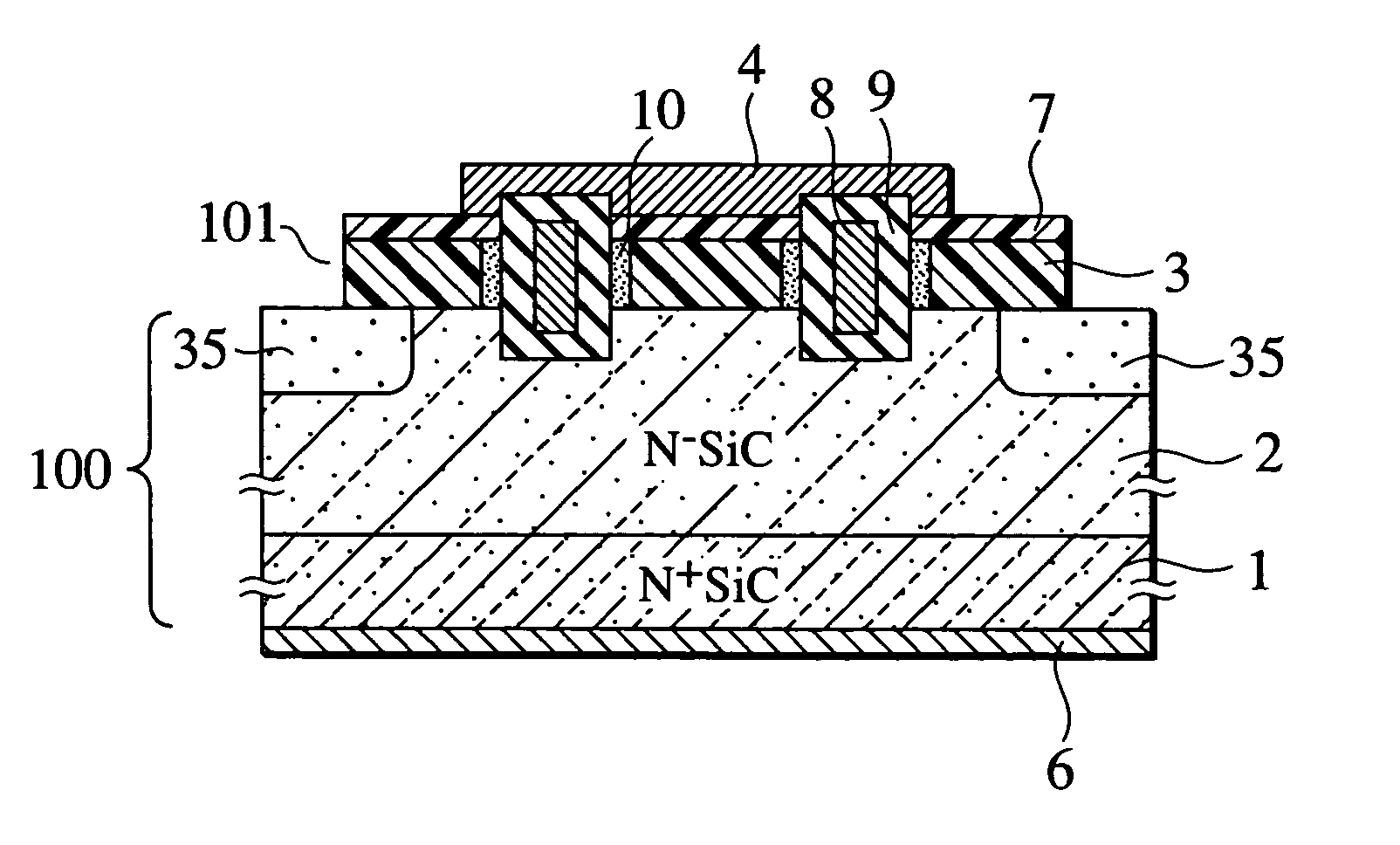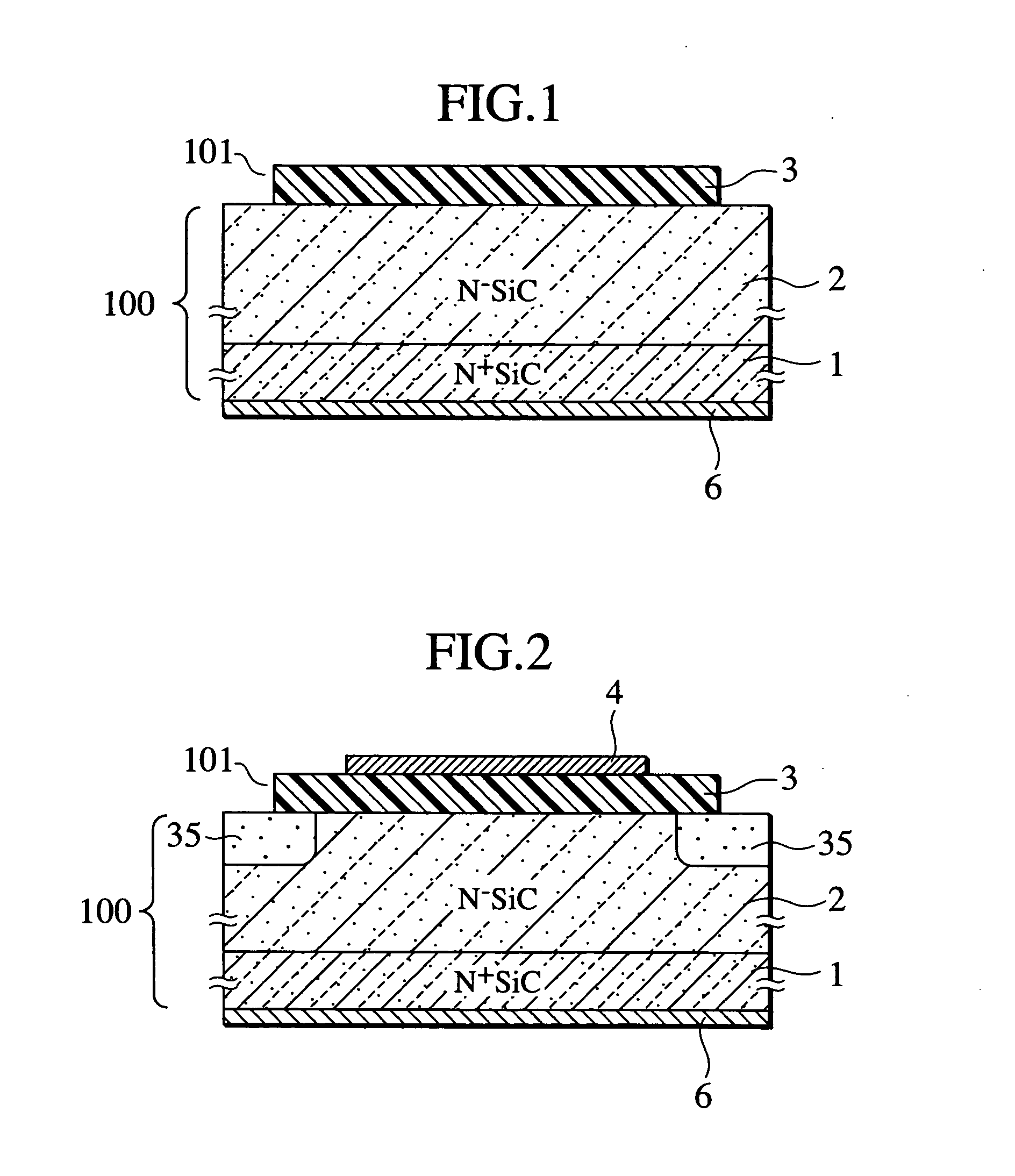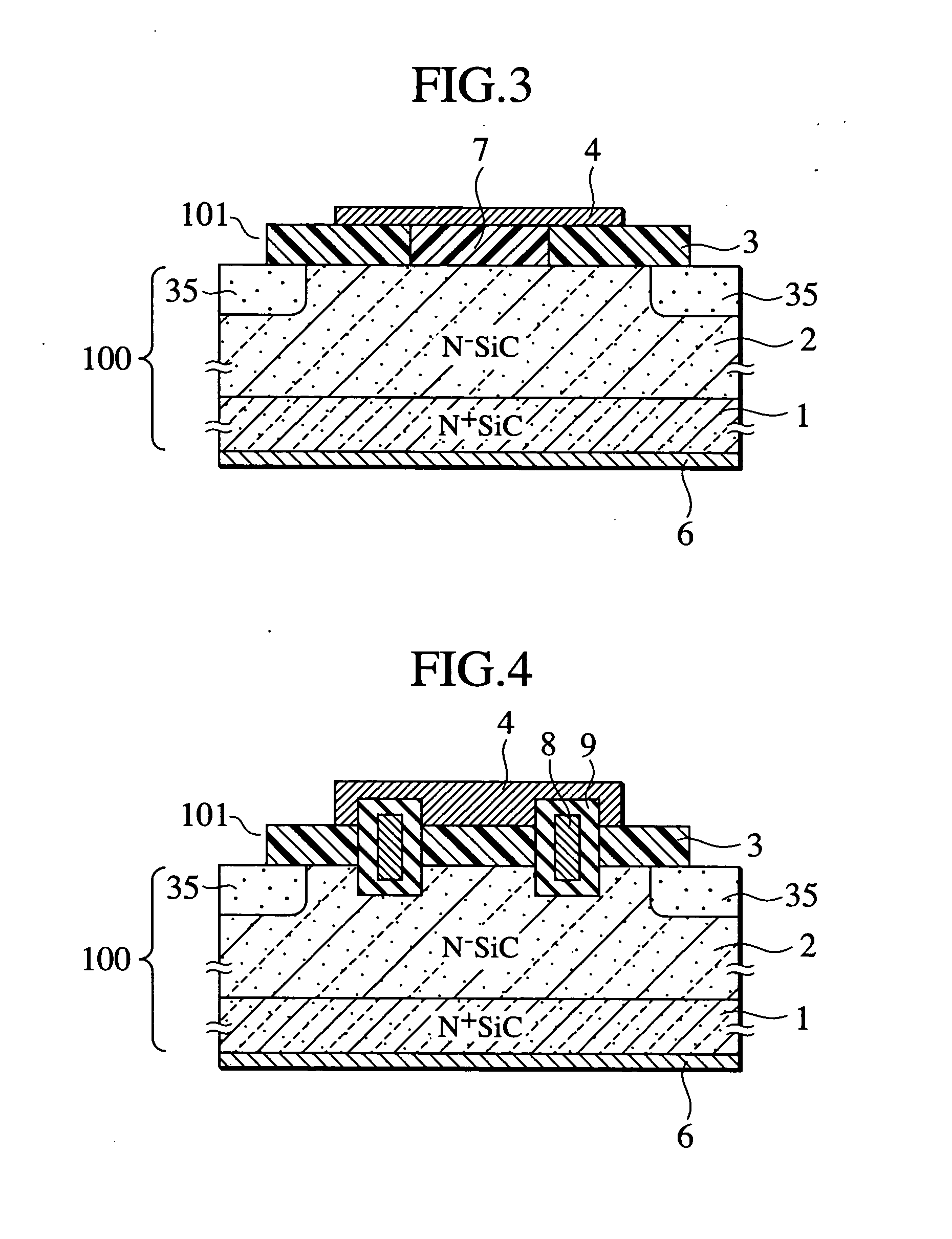Semiconductor device and method of manufacturing the same
a semiconductor and semiconductor technology, applied in semiconductor devices, diodes, electrical devices, etc., can solve the problems of deteriorating the surface of silicon carbide substrates, affecting the performance of the related art, so as to reduce the concentration of impurities, increase the withstand voltage, and increase the leakage current
- Summary
- Abstract
- Description
- Claims
- Application Information
AI Technical Summary
Benefits of technology
Problems solved by technology
Method used
Image
Examples
first embodiment
[0044] (First Embodiment)
[0045]FIG. 1 is a sectional view showing a semiconductor device according to a first embodiment of the present invention. According to this embodiment, the semiconductor device employs a silicon carbide substrate 1. The silicon carbide substrate 1 is made of an n+-type and is made of, for example, silicon carbide of polytype 4H. On the substrate 1, an n−-type epitaxial region 2 is formed to provide a silicon carbide semiconductor base 100. The substrate 1 has, for example, a specific resistance of several mΩ (milliohm(s)) cm to several tens of Ω (ohm) cm and a thickness of about 200 to 400 μm (micro meter(s)). The epitaxial region 2 has, for example, an n-type impurity concentration of 1015 to 1018 cm−3 and a thickness of several μm (micro meter(s)) to several tens of μm (micro meter(s)). According to this embodiment, the epitaxial region 2 has an impurity concentration of 1016 cm−3 and a thickness of 10 μm (micro meter(s)). Although the first embodiment is ...
second embodiment
[0069] (Second Embodiment)
[0070]FIG. 4 is a sectional view showing a semiconductor device according to a second embodiment of the present invention and corresponding to the structure of the first embodiment shown in FIG. 2. Parts of the second embodiment that operate like those of FIG. 2 will not be explained and parts that are specific to the second embodiment will be explained in detail.
[0071] In FIG. 4, a part of a heterojunction interface of a heterojunction diode (FIG. 2) is provided with a gate electrode 8 covered with a gate insulating film 9, to form a transistor. In FIG. 4, the second embodiment forms trenches in an epitaxial region 2. It is also possible to employ a planar structure having no trenches.
[0072] Operation of the second embodiment will be explained. For example, a surface electrode 4 is grounded and a positive potential is applied to a bottom metal electrode 6. For example, a ground potential or a negative potential is applied to the gate electrode 8, to keep...
third embodiment
[0094] (Third Embodiment)
[0095]FIG. 14 is a sectional view showing a silicon carbide semiconductor device according to a third embodiment of the present invention. In FIG. 14, an n+-type silicon carbide substrate 1 and an n−-type epitaxial region 2 formed on the substrate 1 form an n-type silicon carbide semiconductor base 100. Here, the n-type is a first conductivity type and silicon carbide is a first semiconductor material.
[0096] On a first principal face of the silicon carbide semiconductor base 100, i.e., on the epitaxial region 2, an n-type polysilicon region 63A is formed. The n-type polysilicon that forms the region 63A has a different band gap from silicon carbide and serves as a second semiconductor material. Between the epitaxial region 2 and the polysilicon region 63A, a heterojunction is formed.
[0097] On the first principal face of the silicon carbide semiconductor base 100, i.e., on the epitaxial region 2, an electric field relaxation part 65 is formed to include an ...
PUM
 Login to View More
Login to View More Abstract
Description
Claims
Application Information
 Login to View More
Login to View More - R&D
- Intellectual Property
- Life Sciences
- Materials
- Tech Scout
- Unparalleled Data Quality
- Higher Quality Content
- 60% Fewer Hallucinations
Browse by: Latest US Patents, China's latest patents, Technical Efficacy Thesaurus, Application Domain, Technology Topic, Popular Technical Reports.
© 2025 PatSnap. All rights reserved.Legal|Privacy policy|Modern Slavery Act Transparency Statement|Sitemap|About US| Contact US: help@patsnap.com



